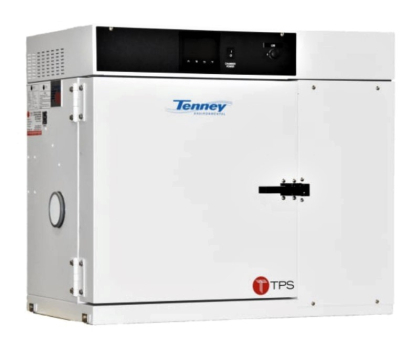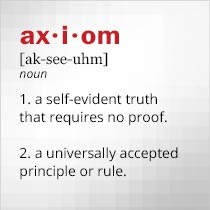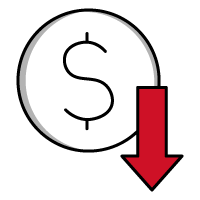Keep Temperature and Humidity Under Control
January 31, 2023
 |
Elevated temperature and humidity can shorten the operating lifetime of electronic and mechanical components and systems. Even frigid operating environments can be threatening to the reliability of an electronic product. For that reason, being able to control temperature and humidity provides great benefits and flexibility when evaluating the reliability of a new design or when ensuring that a product can withstand challenging operating conditions and provide the performance expected over a long operating lifetime. Control usually comes in the form of a programmable, computer-controlled temperature or temperature and humidity test chamber.
Not all electronic or even mechanical products need to be tested across different temperature and humidity ranges, of course. Most often, products meant for outdoor use and not hermetic will require the materials and production quality that enable them to withstand wide operating temperature ranges and levels of relative humidity (RH). Electronic and mechanical components and systems for aerospace and defense are normally associated with a need for extensive temperature and humidity testing, and test routines and standards are clearly defined in military documents such as MIL-STD-810 and MIL-STD-883. Organizations that help establish practical guidelines for temperature and humidity testing in these markets include the American Society for Testing and Materials and the Society of Automotive Engineers.
Temperature and humidity testing provide insights into whether a product or device under test (DUT) will fail or even meet required levels of performance when simulated and stimulated over extreme ranges of temperature and relative humidity. The testing can be used to certify a product’s compliance to a set of environmental conditions and can be performed on passive devices and components such as attenuators and filters as well as active components such as amplifiers by applying bias energy during a temperature-humidity-bias (THB) reliability test. To shorten the time required to determine where a DUT’s failure point may occur under extreme conditions of temperature and humidity, temperature and humidity testing is typically performed under conditions that mimic long testing procedures compressed into much shorter measurement times, as part of highly accelerated life testing (HALT) or highly accelerated stress screening (HASS). One such accelerated temperature and humidity test is known as the 85/85 test, under which a DUT is maintained at +85°C and 85% RH for a specified period. It accelerates the temperature and humidity stress that a DUT might normally endure so that reliability testing can be performed in a much shorter time. Temperature and humidity testing can be performed in a static manner, with constant (elevated) temperature and humidity, as dynamic routines that cycle or change temperatures and RH, or as combinations of the two approaches, guided by a computer program.
Inside a Chamber
Requirements for a temperature or temperature/humidity chamber are typical determined by the DUT or type of DUT, such as according to its size, application, and operating environment. Each chamber provides a useful volume to contain DUTs and performs according to a set of operating parameters that include temperature range, humidity range, how fast it can reach a stable operating condition, and the tolerance of the stability for each parameter. Environmental chambers with wide temperature and humidity ranges and excellent stability are available in a variety of sizes and styles including formats small enough to fit on a desktop for temperature and humidity testing during the design stage of a product.
As an example, the ESPEC SH-242 is a bench-top temperature chamber available with humidity control. With outside dimensions of 17.32 × 27.18 × 27.36 in. (440 × 690 × 695 mm) and weight of just 182.98 lb. (83 kg), this is a test chamber compact enough to fit in many workplaces. Its environmentally controlled internal dimensions of 11.81 x 11.81 x 9.84 in. (300 x 300 x 250 mm) yield chamber capacity of 22.5 L with wide temperature range of -40 to +150°C and humidity range (when included) of 30 to 95% RH with low ±3% RH fluctuation. Once a temperature is set, this small but robust test chamber maintains temperature fluctuations within ±0.5°C or less across the full temperature range and within 4°C across the test volume. The SH-242 has a temperature heat-up rate of 3.2°C/min and a temperature pull-down rate of 2.1°C/min, starting with an empty chamber, it can raise temperature from -40 to +150°C within 60 min and drop temperature from +20 to -40°C within 50 min.
For such a small temperature and humidity chamber, the SH-242 is loaded with features, including a color liquid-crystal-display (LCD) touch-panel screen for local control and USB and Ethernet/LAN ports for connection to a personal computer for remote control via additional software. The chamber incorporates a nichrome strip wire heater, stainless steel cartridge heater humidifier, and hermetically sealed refrigerator with air-cooled condenser.
When a larger workspace is needed, albeit without humidity control, the Tenney Jr temperature test chamber provides a generous test volume of 31.71 L. One of the company’s Thermal Product Solutions (TPS), it is designed and constructed to meet the needs of military and pharmaceutical product research and production temperature testing. It measures 37 × 22 × 31.75 in. (940 × 559 × 806 mm) and weighs 260 lbs. (118 kg) with internal workspace of 16 × 11 × 11.75 in. (406 × 279 × 298 mm). It provides a standard temperature range of -68 to +180°C with an option for -75 to +200°C. Once a temperature is set and reached, the test chamber maintains the set temperature with consistency within ±1°C. The temperature test chamber can make a temperature heat-up transition from ambient temperature to +200°C within 60 min and from ambient to +105°C within 20 min.
For humidity and temperature, control are both needed within a larger test chamber, the Test Equity 1007H may not be a benchtop unit, at 890 lbs. and 33.00 × 68.75 × 54 in. (838 × 1746 × 1372 mm). But it does provide enough workspace, at 24 × 21 × 24 in. (609 × 533 × 609 mm), for larger DUTs. It has a temperature range of -73 to +175°C with ±0.5°C control and ±1°C uniformity across the workspace. It also provides a humidity range of 10% to 95% RH with ±0.3% RH consistency. A color touch-screen display assists local control while RS-232 and Ethernet interfaces link to PCs for remote control. The temperature and humidity chamber can heat up from an ambient temperature (+25°C) to +150°C in 20 min. and drop from ambient to -55°C in 25 min.
When even larger workspace is needed, the Thermotron SE-600-6-6 environmental chamber delivers, with a 586-L volume. This unit measures 40 x 26.25 x 34 in. (102 x 67 x 86 cm) and requires floorspace, with a shipping weight of 1740 lbs.(789 kg). But even with the large workspace, it commands a temperature range of -70 to +180°C within 0.3°C tolerance and humidity range of 10% to 98% RH with stability of ±2.5% RH.
Temperature forcing systems, like the Intest ATS-810-M, Temptronic TP0-4300A and MPI TA-5000A, are specialized test equipment that are specifically designed to simulate a wide range of temperatures and thermal profiles. These systems are different from traditional environmental chambers in that they can apply a specific temperature or thermal profile to a product or device in a controlled manner. This allows for the testing of a product's response to specific temperature changes and thermal cycles, rather than simply exposing it to a range of temperatures and humidity levels. Additionally, temperature forcing systems are typically more compact and portable, as well as have a smaller footprint than environmental chambers, making them more suitable for laboratory and field testing. They are commonly used in the electronics industry, automotive industry, aerospace industry and medical devices industry, to test the thermal performance of devices and components under controlled conditions, and to ensure that they will perform as expected in real-world conditions.
Portability is subject to the size of an environmental chamber, and smaller units can fit where needed although without the sizeable workspaces needed for larger DUTs. Test chambers detailed here are examples of many more units available on the Axiom Test Equipment website (www.axiomtest.com). The site also offers additional advice on finding the right environmental chamber in the earlier blog, “Considerations in Choosing an Environmental Chamber”
Back to BLOG








